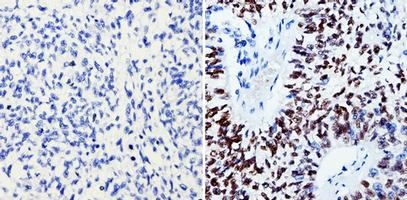
Immunohistochemistry analysis of SOX2 showing staining in the nucleus of paraffin-treated Human lung squamous carcinoma (right) compared with a negative control without primary antibody (left). To expose target proteins, antigen retrieval was performed using 10mM sodium citrate (pH 6.0), microwaved for 8-15 min. Following antigen retrieval, tissues were blocked in 3% H2O2-methanol for 15 min at room temperature, washed with ddH2O and PBS, and then probed with a SOX2 monoclonal antibody (ab171380) diluted by 3% BSA-PBS at a dilution of 1:200 overnight at 4°C in a humidified chamber. Tissues were washed extensively in PBST and detection was performed using an HRP-conjugated secondary antibody followed by colorimetric detection using a DAB kit. Tissues were counterstained with hematoxylin and dehydrated with ethanol and xylene to prep for mounting.
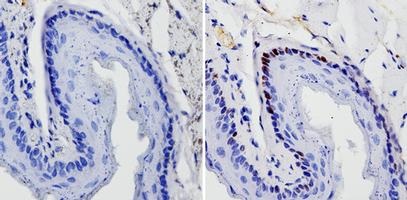
Immunohistochemistry analysis of SOX2 showing staining in the nucleus of paraffin-treated mouse esophagus tissue (right) compared with a negative control without primary antibody (left). To expose target proteins, antigen retrieval was performed using 10mM sodium citrate (pH 6.0), microwaved for 8-15 min. Following antigen retrieval, tissues were blocked in 3% H2O2-methanol for 15 min at room temperature, washed with ddH2O and PBS, and then probed with a SOX2 monoclonal antibody (ab171380) diluted by 3% BSA-PBS at a dilution of 1:20 overnight at 4°C in a humidified chamber. Tissues were washed extensively in PBST and detection was performed using an HRP-conjugated secondary antibody followed by colorimetric detection using a DAB kit. Tissues were counterstained with hematoxylin and dehydrated with ethanol and xylene to prep for mounting.
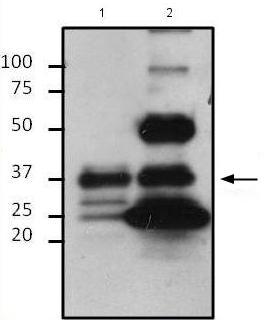
Western blot analysis on immunoprecipitation pellet from NCCIT cells. The antigen-antibody complex was formed by incubating 500 µg of NCCIT whole cell lysate with 5 µg of ab171380 overnight at 4°C. The immune-complex was then captured on 50 µl Protein A/G Plus Agarose. Captured immune-complexes were then washes extensively and eluted sample with loading dye (lane 1) or 25 µg of NCCIT whole cells lysate (lane 2) were resolved on a SDS PAGE gel. An anti-mouse IgG-HRP secondary antibody at a 1/10,000 dilution was incubated for at least 1 hour. Chemiluminescent detection was perfomed.
![All lanes : Anti-SOX2 antibody [20G5] (ab171380) at 1/500 dilutionLane 1 : NCCIT cell lysateLane 2 : NTERRA cell lysateLane 3 : HeLa cell lysateLysates/proteins at 25 µg per lane.Secondarymouse IgG-HRP at 1/10000 dilutiondeveloped using the ECL technique](http://www.bioprodhub.com/system/product_images/ab_products/2/sub_5/3683_ab171380-171705-ab171380WB12.jpg)
All lanes : Anti-SOX2 antibody [20G5] (ab171380) at 1/500 dilutionLane 1 : NCCIT cell lysateLane 2 : NTERRA cell lysateLane 3 : HeLa cell lysateLysates/proteins at 25 µg per lane.Secondarymouse IgG-HRP at 1/10000 dilutiondeveloped using the ECL technique

Immunofluorescence analysis of formaldehyde-fixed H9 embryonic stem cells, labeling SOX2 using ab171380 (left panel) at a 1/200 dilution overnight. DAPI was used to stain the cell nuclei (central panel). Slides were washed with PBS and incubated with a fluorescein-conjugated secondary antibody at a 1/100 dilution.

Immunofluorescence analysis of formaldehyde-fixed HEL 11.4 induced IPS cells, labeling SOX2 using ab171380 (left panel) at a 1/200 dilution overnight. DAPI was used to stain the cell nuclei (central panel). Slides were washed with PBS and incubated with a fluorescein-conjugated secondary antibody at a 1/100 dilution.
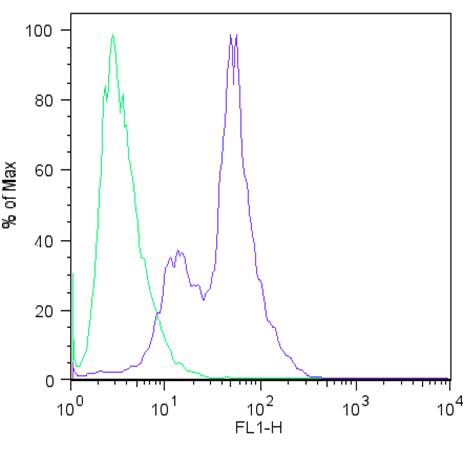
Flow cytometry analysis of H9 embryonic stem cells labeling SOX2 (blue histogram), using ab171380 at a 1/100 dilution, or a mouse IgG (green histogram) at a 1/100 dilution. A fluorescein-conjugated secondary antibody at a 1/200 dilution was used for the analysis.
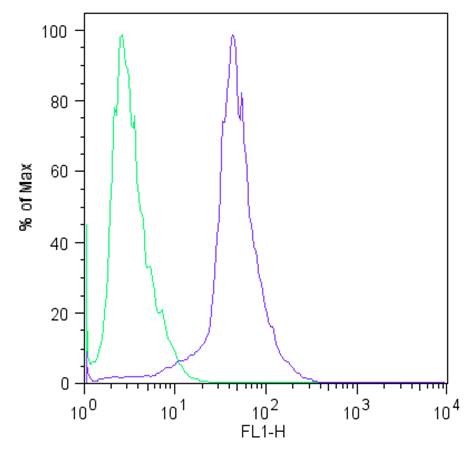
Flow cytometry analysis of HEL 11.4 induced IPS cells labeling SOX2 (blue histogram), using ab171380 at a 1/100 dilution, or a mouse IgG (green histogram) at a 1/100 dilution. A fluorescein-conjugated secondary antibody at a 1/200 dilution was used for the analysis.



![All lanes : Anti-SOX2 antibody [20G5] (ab171380) at 1/500 dilutionLane 1 : NCCIT cell lysateLane 2 : NTERRA cell lysateLane 3 : HeLa cell lysateLysates/proteins at 25 µg per lane.Secondarymouse IgG-HRP at 1/10000 dilutiondeveloped using the ECL technique](http://www.bioprodhub.com/system/product_images/ab_products/2/sub_5/3683_ab171380-171705-ab171380WB12.jpg)



